This is the seventh part of our Intel Evo vs Apple Silicon series, where we're taking a look at what each side can do better than the other. The MacBook Pro 13, Razer Book 13, Razer Core X, Nvidia GeForce RTX 2080 Ti, Samsung T7 Touch SSD, and CalDigit Thunderbolt 3 dock were provided by Intel. All opinions expressed are a result of our own testing and experience.
I've been using Apple's new MacBook Pro for a while now, and I've been writing about my findings as I go. There's a lot that's good about it, and there's a lot that's bad. One thing that I learned rather quickly was that Apple Silicon isn't the home run that the Cupertino firm would have you believe.
In general day-to-day usage, I don't think that I'd have noticed a performance difference if no one had told me. It certainly doesn't feel any faster than a Windows 10 PC with an 11th-generation Intel processor, although there are certainly some tasks that it performs faster, such as video rendering. But as far as launching apps and general tasks go, I wouldn't have noticed a difference.
Don't get me wrong. What Apple did here is certainly an incredible feat of engineering, and it shines a bright light on what the future of the Mac can look like. But personally, I think that this is a first-gen product that you'll want to skip.
Specs
| CPU | Apple M1, octa-core with four performance and four efficiency cores, octa-core GPU, 16-core neural engine |
|---|---|
| Body | 304.1x212.4x15.6mm (11.97x8.36x0.61in), 1.4kg (3lbs) |
| Display |
13.3-inch (diagonal) LED-backlit display with IPS technology; 2560-by-1600 native resolution at 227 pixels per inch with support for millions of colors |
| Battery |
Up to 17 hours wireless web |
| Memory |
8GB unified memory |
| Storage |
256GB SSD |
| Ports | (2) Thunderbolt / USB 4 ports with support for charging, DisplayPort, Thunderbolt 3 (40Gbps), USB 4 (40Gbps), USB 3.1 Gen 2 (up to 10Gbps) (1) 3.5mm audio jack |
| Input |
65 (U.S.) or 66 (ISO) keys including 4 arrow keys in an inverted‑T arrangement |
| Connectivity |
802.11ax Wi-Fi 6 wireless networking |
| Webcam | 720p FaceTime HD camera |
| Video support |
Simultaneously supports full native resolution on the built-in display at millions of colors and: Thunderbolt 3 digital video output |
| Audio |
Stereo speakers with high dynamic range |
| Operating requirements |
Line voltage: 100V to 240V AC |
| OS | macOS 11 Big Sur |
| Material | Aluminum |
| Color | Silver |
| Price | $1,299 |
Day one
Design
You can certainly feel the build quality when you hold a MacBook Pro, but one thing I'll definitely say about the design is that it feels dated. Apple certainly could have redesigned the chassis to make it thinner and lighter given the new ARM processor, but it didn't. This thing weighs three pounds, which isn't exactly light in the world of clamshell laptops anymore. It's also got huge bezels when compared with the rest of the market.
When we see a silver Windows laptop that's made out of aluminum, we call it a MacBook clone. Well, here's the original, and it makes me wonder if it makes it any more exciting to be the original. Either way, that's what it is, a silver laptop with an Apple logo stamped in the lid; it comes in Space Gray as well.
Apple isn't one for including a lot of ports on its laptops, although rumor has it that it may add some back in the future. For now, this laptop comes with two Thunderbolt ports on the left side, and that's it when it comes to USB connectivity. According to Apple, these ports support USB 4.0, USB 3.2 Gen 2, and Thunderbolt 3, getting data transfer speeds of up to 40Gbps.
The only problem is that they're missing a key feature of Thunderbolt, which is the ability to connect dual 4K monitors on a single port. A major drawback of Apple Silicon is that you can't use dual external monitors with this laptop, no matter what the resolution. The only Apple Silicon Mac that supports dual external monitors is the Mac mini, which lets you do it if you connect one via the HDMI port.
There are, apparently, some workarounds for this, such as special accessories that you can buy or using an iPad with the Sidecar feature. I wasn't able to use any of my Thunderbolt docks to get dual monitors to work, and according to Apple's own documentation, it shouldn't work.
On the right side, there's just a 3.5mm audio jack. Indeed, while the port is long gone on iPhones and now even some iPads, it's survived the port exoduses of the Mac.
On a side note, I do wonder what Apple could have planned if it's bringing back ports on its MacBook Pro machines. USB Type-A feels like a big step backward; after all, it's been years since we've been switching to USB Type-C. HDMI is a likely candidate, but that to me seems unnecessary.
Display and audio
The 13-inch MacBook Pro has a 13.3-inch 16:10 display; indeed, while we've been seeing the 16:10 trend across the PC industry for the past six months or so, Apple was doing it before it was cool. The taller aspect ratio makes for a larger surface area, being that the screen is measured diagonally.
The resolution is 2560x1600, which is QHD+, and it's frankly excellent. The colors are accurate, it's bright, it has a full 178-degree viewing angle, and there's no visible pixelation, hence why it's called Retina. It's a fantastic display. Obviously, there's no touch support, something that Apple has been against for some time, although you can use the Sidecar feature on an iPad for that.
One thing that seems clear as day to me is that this thing has massive bezels, at least when compared to modern laptops. Microsoft isn't any better on its Surface lineup, but the rest of the industry is. Companies like Dell and HP are working out ways to have tiny bezels while still including an IR camera above the display, and all Apple fits in that massive top bezel is a webcam. Even the side bezels are larger than the competition.
But Apple doesn't redesign its products much, so that just continues to make me feel like this is an antiquated design. With the newer ARM processor, it's a perfect opportunity to make the chassis smaller and thinner, while chopping down the bezels to reduce the footprint. That's simply not happening in this generation though.
Apple puts the stereo speakers on either side of the keyboard, and they sound great. Honestly, all of the things that have to do with overall quality really hit the nail on the head. It has a pretty screen, clear speakers, a great keyboard, and more. It's clearly designed for creative work where an accurate display and clear speakers are necessary, and Apple's done a great job with that.
Keyboard, touchpad, and Touch Bar
Like I said, the keyboard is fantastic. I never had a Mac in the days of the infamous butterfly keyboard, although it seems like it would have been insane to buy one of those when it was so clear that they were so bad. The new 1mm scissor switches are phenomenal, and they have the proper resistance to feel like they're not so shallow.
While the keys are accurate and comfortable, there's one other thing I want to point out. If you accidentally hit the caps lock key, it doesn't turn on. In fact, it's slightly challenging to hit it on purpose. I noticed this back in 2013 when I bought the only Mac I've ever owned, the Haswell MacBook Air, so it's not a one-time thing. I really wish more PC vendors would focus on this one little thing, because we've all hit that button accidentally before, and it's super annoying.
The top-right button on the keyboard is a power button, which doubles as a fingerprint sensor for Touch ID. However, unlike on Windows, you can't use Touch ID when you boot up the PC, which is probably the time that you want to use it the most. It's similar behavior to what we've seen on iOS for some time.
And then there's the Touch Bar, another infamous feature that Apple is rumored to be getting rid of when it brings back old ports. Personally, I think it's a good idea in theory. It gets rid of function keys which are antiquated, and replaces them with buttons that can be customized by each app. For example, in the Edge browser, I can tap an icon to go to a certain tab.
It's smart. Instead of having to know shortcuts, or for example, that F5 refreshes the page in a browser, there's actually a refresh button in the Touch Bar. The only problem is that I've not touched the Touch Bar in the entire time that I've reviewed this product. Perhaps I'm just not used to it, or perhaps it's because my hand is already on the touchpad.
Speaking of the touchpad, it's big, which is always nice. Indeed, Apple took advantage of the available real estate for this. It's also completely haptic. You'd probably never notice it just by using it, as clicking feels natural, but when you power down the PC, you'll notice that it no longer clicks.
It also has a sort of hard click function, which is more annoying than anything else. This is another thing that I didn't use, unless it happened accidentally. It takes a little bit of getting used to.
Hardware compatibility
I wrote about this already, and it was a much deeper dive, but I wanted to give it its own section here. Hardware compatibility is already an issue on macOS, but it's especially an issue with the new ARM processor. As I already mentioned, you can't connect dual external displays, and that's probably the biggest issue for something that's branded as Pro.
Another key thing that won't work is an external GPU. Intel sent me an Nvidia GeForce RTX 2080 Ti for this project, and it doesn't work with the MacBook Pro. It does, however, work with Intel-powered Macs.
Other items that I used were Xbox controllers, the Samsung Touch T7 SSD, and the Logitech Brio. For the most part, these things worked as expected, although the newer Xbox Series X controller didn't work; support for that's going to be added soon though. You won't be able to use the IR camera on the Logitech Brio, as biometric authentication is reserved for Apple's own Touch ID.
Software
The MacBook Pro can run two kinds of apps. It can run native ARM64 apps, and it can run Intel apps through Rosetta 2. In fact, Intel apps are surprisingly good, and you'll need them since so many apps aren't updated for M1 yet.
Adobe Creative Cloud is the biggest example. You'll find that apps like Photoshop, Premiere Pro, Media Encoder, Premiere Rush, After Effects, Character Animator, and Audition all have betas, and Lightroom isn't in beta but supports the M1 now. If the beta doesn't work for you, you can always run the Intel app side-by-side, taking a bit of a hit in performance.
When I first ran the Photoshop beta, it crashed if I tried to crop an image. Luckily, these things are getting updated pretty frequently. Premiere Pro actually still doesn't have support for MP3 files, so you can't import them into your project. You'll have to convert audio files to WAV before using them.
Now, let's talk about Windows 10, because Boot Camp is gone now, even though there's still a Boot Camp Assistant app that will just tell you there's no Boot Camp if you launch it. You can run Windows in virtualization using Parallels, and frankly, you shouldn't, at least not right now.
Microsoft only publishes VHDX images of Windows on ARM for Insider Previews, because they're made for Hyper-V, and Hyper-V for ARM is something that's in preview as well. And also, apps like the Microsoft Store, Photos, and a lot more don't work in Parallels on the M1 MacBook Pro. The reason is because the chipset actually doesn't support 32-bit ARM apps, which is no surprise because there hasn't been a 32-bit app in the Apple ecosystem in ages. There hasn't been a Windows device with a 32-bit ARM processor either since phones were supported, so it's unclear why those apps haven't been updated.
Parallels has some great integration with macOS though. You can access the macOS file system from Windows, and you can even set Safari as the default browser. Unfortunately, you still can't access an NTFS storage device from inside of Windows 10.
One other thing I just want to draw attention to is that I've been living in the Apple ecosystem this whole time and it's quite nice. Ever since the iPhone 12 series came out, I've been using the iPhone 12 Pro Max as my daily driver along with my Apple Watch, and using all of these things together is quite nice, even if part of the reason for that is because Apple doesn't build out support for other platforms.
Just having a Messages app is super handy. Also, AirDrop lets me send images and videos to the MacBook quickly, a real pain point on Windows 10. And when I use Android, all of that stuff still works too.
Performance and battery life
The model that Intel sent me includes 8GB RAM and a 256GB SSD, so it's the base model. Note that higher-end models of the 13-inch MacBook Pro still come with 10th-gen Intel processors, and there's a reason for that. While what Apple has done here is great, it's just not very pro.
Apple has been designing custom processors for ages, and that's what goes into iPhones and iPads. Indeed, the A7 in the iPhone 5s was the first mainstream 64-bit ARM processor, something that Qualcomm had to respond to with the Snapdragon 810. At the time, many thought 64-bit processors in phones were a gimmick, and that turned out to be untrue.
The Cupertino firm continued to build out its ARM processors, but it was still Qualcomm that first got into the PC market. The bad news is that Apple blew away Qualcomm's accomplishments on its first try. The latest Snapdragon Compute chipset is the 8cx Gen 2, and it was announced in September, after Apple announced the transition to Apple Silicon. And as you're about to see in benchmarks, Apple Silicon really does a lot better.
Unfortunately, the only two benchmarks I could run were Geekbench and Cinebench, since those were the only ones supported. Those only test the CPU though.
| MacBook Pro 13 M1, macOS |
MacBook Pro 13 M1, Windows 10 (Parallels) |
Surface Pro X SQ2 |
Razer Book 13 Core i7-1165G7 |
|
|---|---|---|---|---|
| Geekbench | 1,720 / 7,668 | 1,398 / 2,697 | 794 / 3,036 | 1,536 / 5,405 |
| Cinebench | 1,495 / 7,771 | 1,210 / 3,711 |
Real-world performance feels like a mixed bag to me. General tasks don't feel particularly fast, and when it comes to things like launching apps and boot time, it even feels sluggish. Video rendering times are quick though, as I've been able to render 4K 60fps videos that are 15 minutes long in under 20 minutes.
Battery life is pretty wild too. You're looking at a solid 12 hours of real-world usage here. One thing that's always impressed me with Apple is that it's pretty good at quoting real-world battery life. When a Windows OEM says 12 hours, that means that you're actually going to max out at around eight hours in real life.
Conclusion
The 13-inch MacBook Pro with Apple Silicon is an impressive product for a variety of reasons. It's just not pro. The M1 processor is fine for the MacBook Air, but if you feel like you need a step up from the Air to the Pro, I feel like that's not what you're getting here.
The fact that this can't support dual external monitors should be a deal-breaker. I really don't think that that's a niche use case. Boot Camp would be nice as well, given that it's clearly possible to run Windows on this thing, even if it is limited. And also, the design just feels so old. Coming from reviewing a variety of Windows 10 PCs, the bezels feel so massive on the MacBook Pro.
The build quality feels solid though, and like I said, Apple really nails down the core components of PC usage, such as the screen and the keyboard. It's also super impressive that the Cupertino company was able to build the custom chipset that it did.
I just think it's worth waiting for the second generation of the product, or getting a Windows laptop for that matter. And if you need a 13-inch MacBook Pro right now, I'd get the Intel one. While the M1 is fantastic and has a bright future, it still leaves a bit to be desired.
Check out the rest of the series:
- Part one: Unboxing the MacBook Pro 13
- Part two: Unboxing the Razer Book 13
- Part three: Setting up the peripherals
- Part four: Hardware compatibility
- Part five: Software
- Part six: Razer Book 13 review
- Part eight: Conclusion










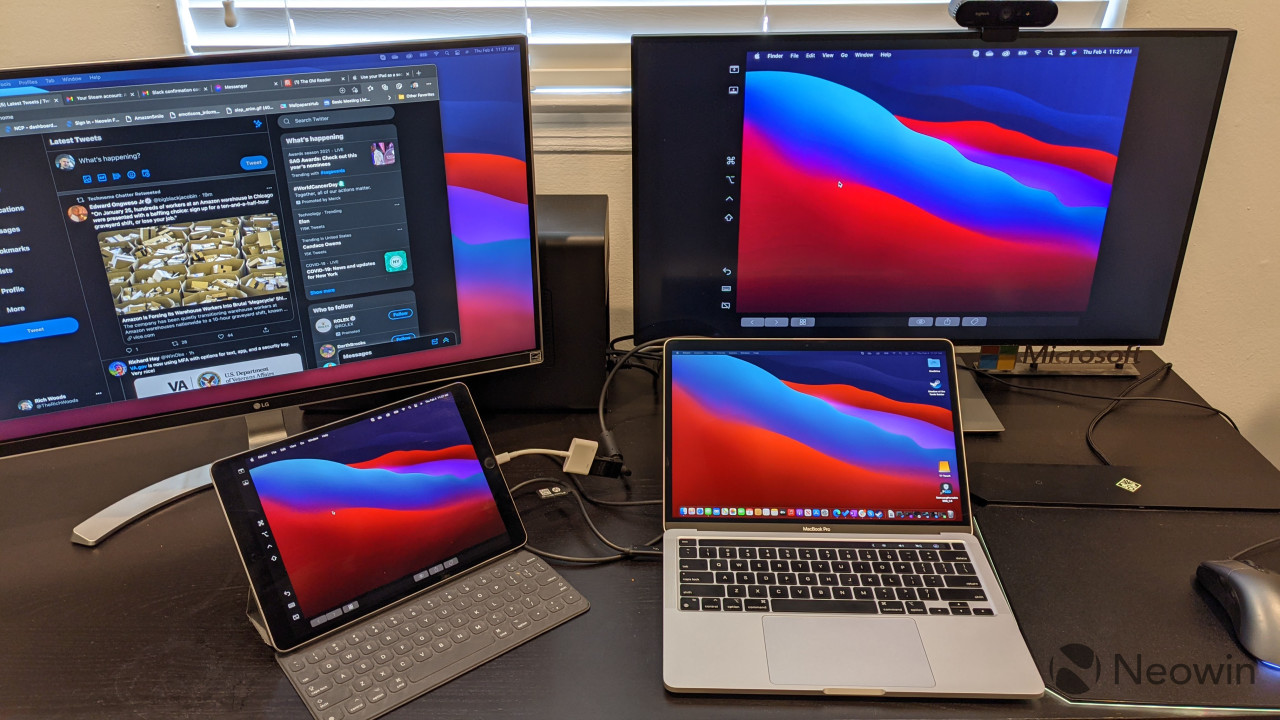



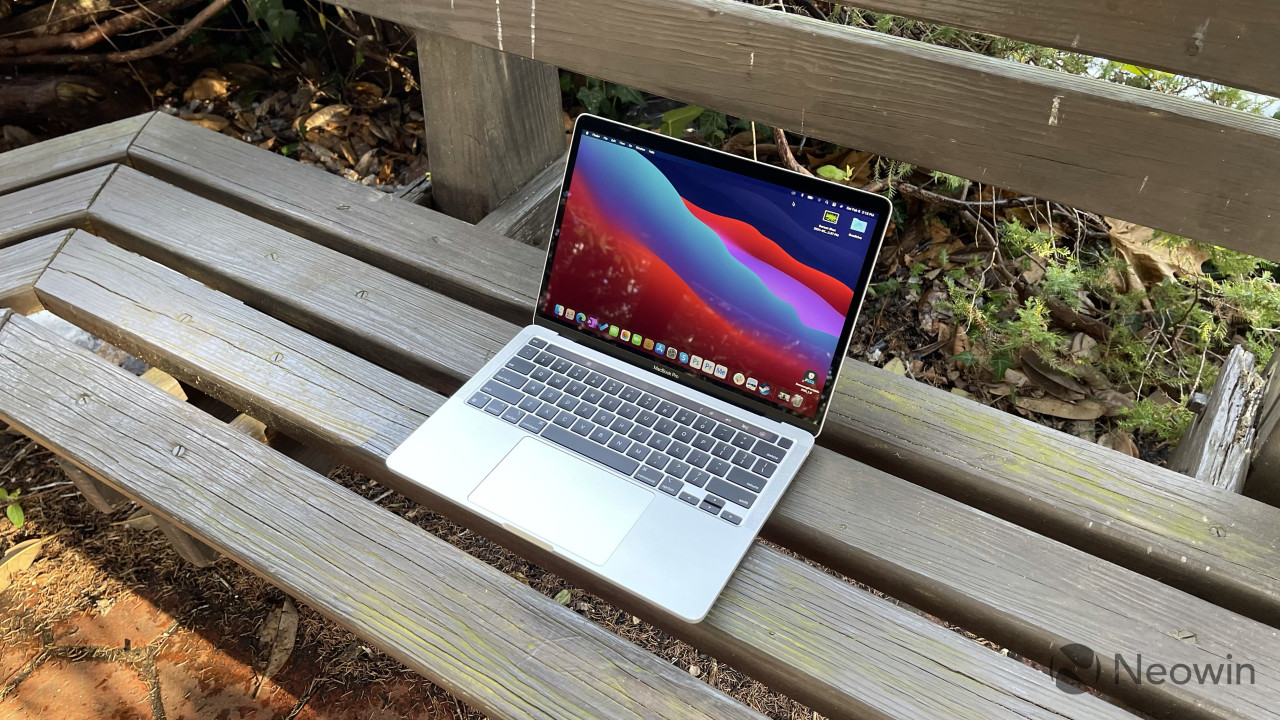


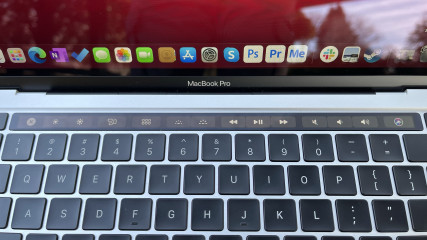
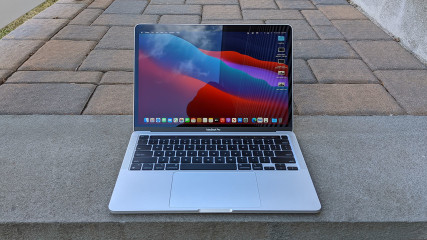
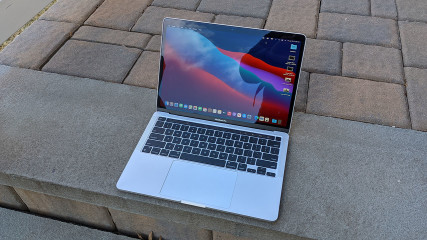
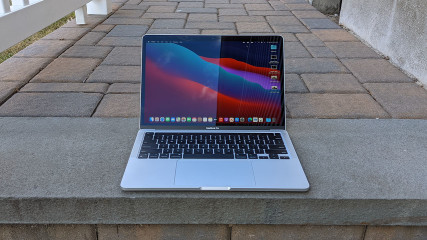

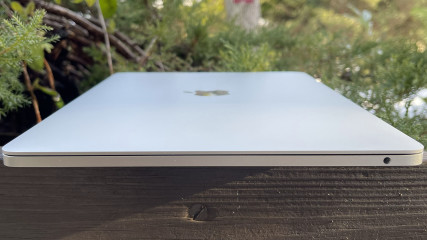
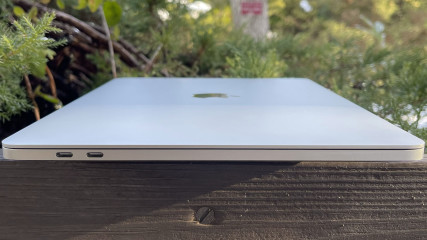




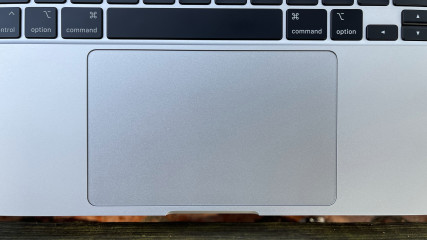

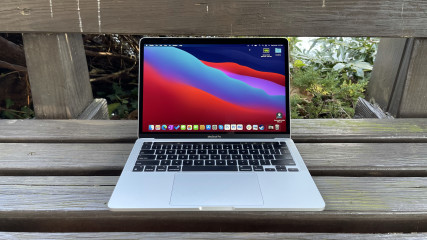
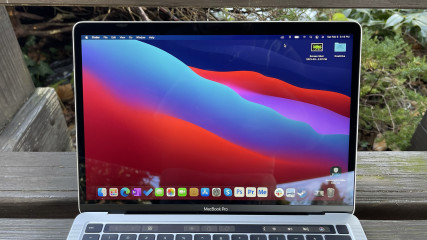
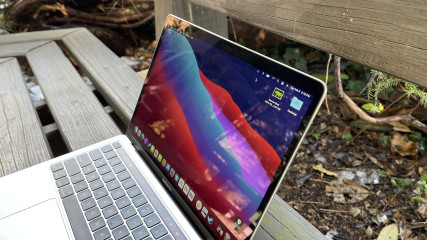
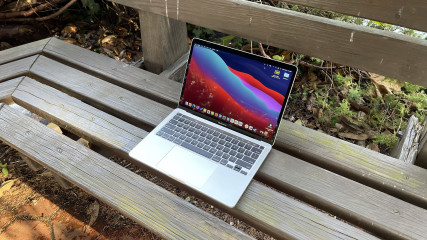

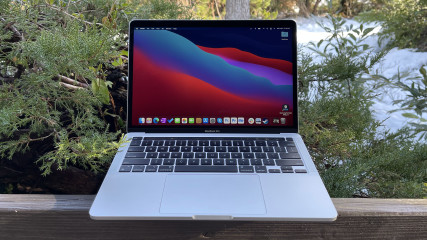









46 Comments - Add comment